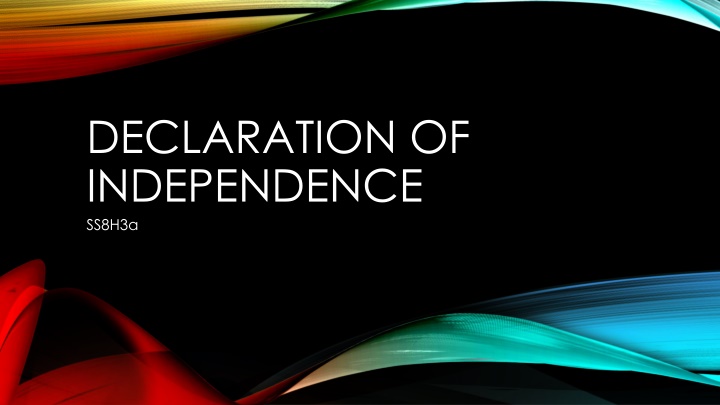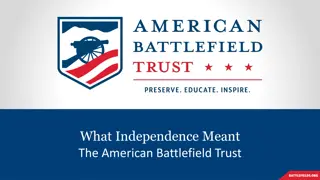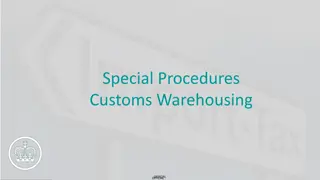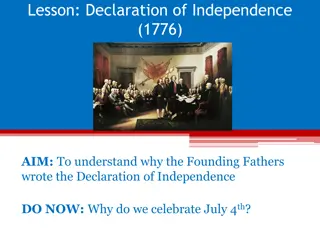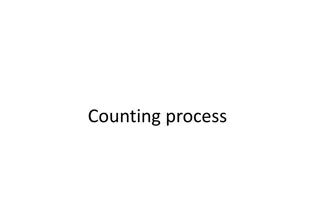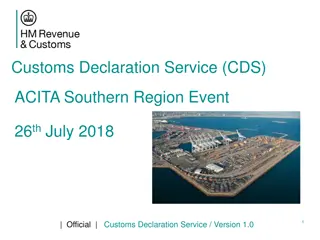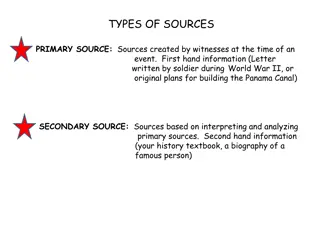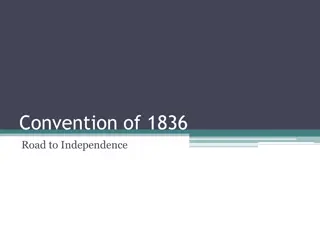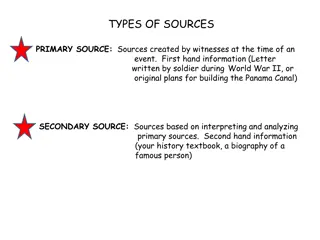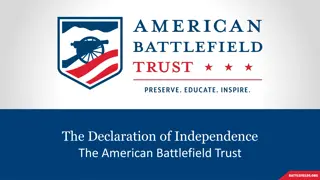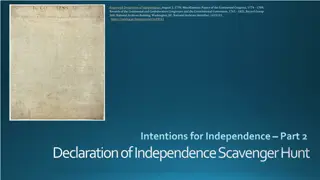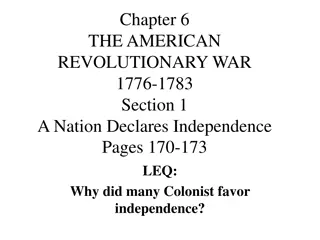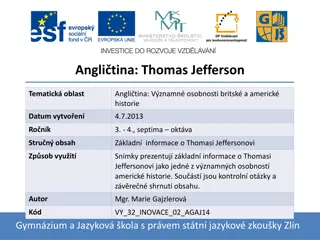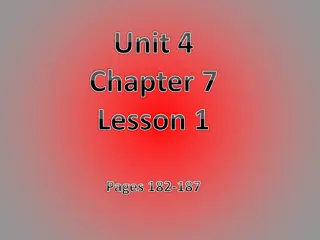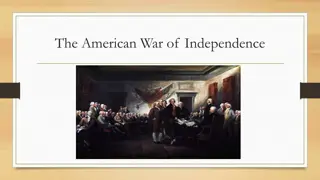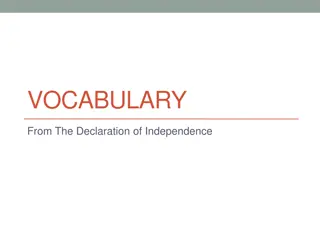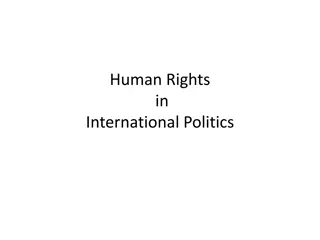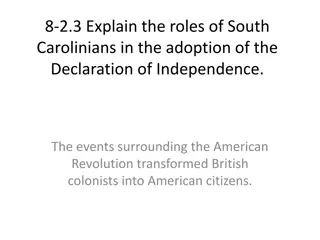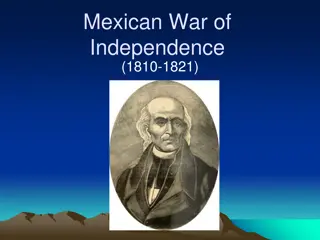The Declaration of Independence: An Insightful Overview
Learn fascinating facts about the Declaration of Independence, including the actual signing date, the key drafters, and the influence of John Locke's Enlightenment ideas. Explore the three parts of the declaration and understand its significance in declaring independence from England.
Download Presentation

Please find below an Image/Link to download the presentation.
The content on the website is provided AS IS for your information and personal use only. It may not be sold, licensed, or shared on other websites without obtaining consent from the author.If you encounter any issues during the download, it is possible that the publisher has removed the file from their server.
You are allowed to download the files provided on this website for personal or commercial use, subject to the condition that they are used lawfully. All files are the property of their respective owners.
The content on the website is provided AS IS for your information and personal use only. It may not be sold, licensed, or shared on other websites without obtaining consent from the author.
E N D
Presentation Transcript
DECLARATION OF INDEPENDENCE SS8H3a
DID YOU KNOW? The Declaration of Independence WASN T actually signed on July 4, 1776. It was ADOPTED on that date and officially SIGNED on August 2, 1776. John Hancock was the 1stto sign. His signature was the largest because he was the leader of the Continental Congress and he wanted King George to be sure to see his signature. If the signers of the Declaration of Independence had been captured by the British, they would have been hanged for treason.
There wee 5 men appointed to draft the Declaration of Independence: Thomas Jefferson, John Adams, Ben Franklin, Roger Sherman & Robert Livingston, but Jefferson was the main author. Jefferson was inspired by English scholar, John Locke, and his ideas of Enlightenment. Locke said the it was the governments job to protect its people and their natural, unalienable (cannot be separated, surrendered or taken away) rights. Locke stated that ALL men are created equal and are born with life, liberty & property. If the government interferes with these rights, the people have the right to overthrow the government. He believed that government should run on a CHECKS & BALANCES system which limited government power.
The Declaration of Independence was written because the Continental Congress wanted to explain why the colonies were revolting against England and to officially declare their independence. There are 3 parts of the declaration Preamble: Explains natural rights of all people, states reasons for document Part 2: List of grievances against King George British soldiers in the colonies Quartering Act Not punishing soldiers when they harm colonists Cutting off trade with the rest of the world Taxing colonists without representation Part 3: Actual declaration of independence from England
